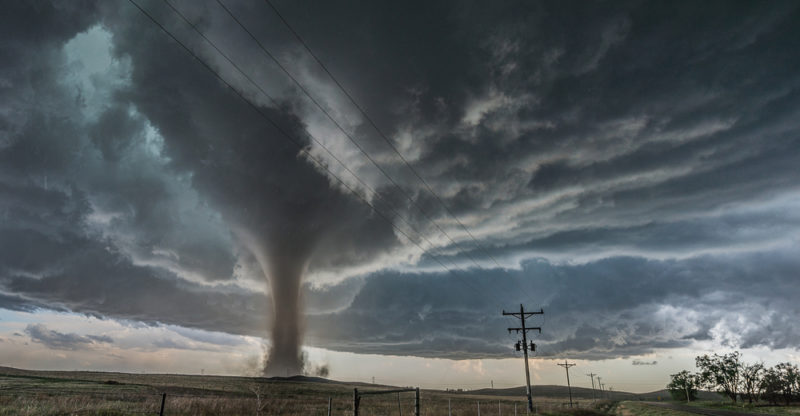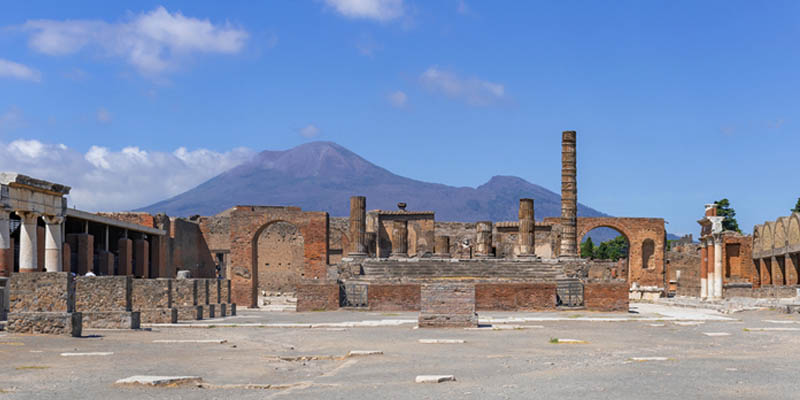We explore natural disasters, and explain their causes and effects. In addition, we discuss their characteristics, classification, and provide examples.

What are natural disasters?
Natural disasters are natural events that cause significant human or property loss. They are caused by nature and impact human populations severely. Among natural disasters are earthquakes, volcanic eruptions, and tsunamis.
A characteristic of natural disasters is the fact that human beings can do nothing to avoid them, nor can they mitigate their intensity in any way. The only measures communities can take in the face of a natural disaster are monitoring and prevention.
Natural disasters usually bring great property and economic loss, and often result in high death tolls. The governments of countries affected by this type of extreme natural events take measures to mitigate damage and predict the occurrence of these phenomena as much as possible.
Natural disasters are caused by the occurrence of an extreme natural phenomenon that negatively affects the population in a given area. Earthquakes, for example, occur due to a sudden movement of the Earth's crust and are usually extremely difficult to anticipate and predict. For this reason, they take the population by surprise, in some cases giving them no time to take the necessary precautionary measures to stay safe.
Other phenomena like hurricanes and volcanic eruptions typically give early warnings, allowing more time for preparedness. With adequate monitoring of their development, they can be predicted several days in advance.
Natural disasters or environmental problems? Natural disasters are often confused with environmental problems. Natural disasters are events caused by nature without human intervention which seriously affect people. Environmental problems also have negative effects on populations, but are caused by human activities. A volcanic eruption or an earthquake are natural disasters, while deforestation or soil contamination are environmental problems.
- See also: Sandstorm
Geological disasters
Geological disasters are:
- Earthquakes. They are strong vibrations of the Earth's crust caused by the release of energy within the interior of the planet. They occur due to the displacement of the tectonic plates that make up the Earth's surface. High-magnitude earthquakes can cause significant damage to structures. Earthquake damage is measured through the use of the Mercalli scale, which assigns values from 0 to 12 based on the destruction caused.
- Volcanic eruptions. They occur when the magma accumulated inside a volcano is released to the surface in the form of an eruption. Explosive volcanic eruptions cause the greatest number of natural disasters. Geological monitoring centers in countries with active volcanoes measure the temperature within a volcano’s interior. A significant increase in the internal temperature of a volcano may suggest an impending eruption, which allows for prevention and mitigation measures.
- Tsunamis. They are caused by undersea earthquakes. These earthquakes produce a sudden shift of oceanic plates, generating a large release of energy that is transferred to the water through waves and can lead to the formation of a tsunami. When seismic waves reach the coast, they form large waves that can cause significant damage to structures and populations in coastal areas.
Meteorological disasters

Meteorological disasters are:
- Hurricanes. They are tropical storms that form over the sea and often produce winds exceeding 60 miles per hour (100 km/h). These winds rotate around a central axis as the hurricane moves across the ocean. The diameter of this wind spiral can reach up to 930 miles (1,500 km). Upon reaching the continent, these large storms cause severe damage to structures and may result in fatalities. With accurate satellite monitoring, their paths can be predicted, and preventive and evacuation measures can be taken before the storms reach the continent.
- Tornadoes. These are rotating funnel-shaped winds that spin from the base of a storm cloud toward the ground. They are commonly accompanied by rain and hail. They can reach speeds of 310 miles (500 km) per hour. Tornadoes are meteorological phenomena that can be predicted with very little anticipation, and though they are usually short-lived, they can cause significant damage on the Earth's surface.
- Wildfires. They occur when heat and lack of rain cause fire to start within a forest or grassland, and the fire spreads to inhabited areas. Human-made fires caused intentionally or accidentally are not considered natural disasters. Only naturally occurring fires that negatively impact populations are. They are much more frequent in the hot months, and are impossible to anticipate. When a fire is detected, the authorities deploy fire control operations with firefighters and water-bombing aircraft to control and extinguish the flames in the shortest possible time.
Floods and droughts are often considered natural disasters. However, these extreme events have human causes as well as natural ones. Floods and droughts are often more the result of inadequate urban planning, irregular occupation of flood-prone areas, overexploitation of resources, and deforestation than of excess or lack of rainfall. Therefore, it is not accurate to regard them as natural disasters, but rather it would be more appropriate to classify them as environmental issues.
Can natural disasters be detected and prevented?

Most natural disasters are unpredictable as they do not occur at a regular frequency. This is the case with earthquakes, tsunamis, tornadoes, and volcanic eruptions, which can occur at any time of the year.
However, they sometimes present patterns that allow for some anticipation of their occurrence. Hurricanes, for example, occur between the months of June and November. Wildfires, in turn, are much more frequent in the summer months, with their occurrence being extremely rare in the colder months.
As it is not possible to prevent the occurrence of natural disasters, communities develop prevention strategies to mitigate the damage they can cause.
Natural disaster-prone areas have early warning and detection systems that make it possible to anticipate the occurrence of a disaster. Additionally, the population is trained on how to act in the event of a disaster and where and how to evacuate if necessary.
In earthquake-prone areas, buildings have anti-seismic technology to better resist ground vibrations. In tornado and hurricane-prone areas, houses have shelters for people to take refuge in and stay safe during the event.
Worldwide natural disaster monitoring agencies
Among the world's most important natural disaster monitoring organizations are:
- The Pacific Tsunami Warning Center. It is one of the major tsunami warning systems in the world, covering most of the Pacific Ocean.
- The National Hurricane Center. It is responsible for monitoring and forecasting the occurrence of hurricanes in the Atlantic Ocean.
- The Smithsonian Institution's Global Volcanism Program. It has maintained a continuous watch on volcanic activity worldwide since 1968.
- The Global Wildfire Information System. This system uses satellite images to monitor the occurrence of wildfires in real-time. It was developed by NASA in the United States.
Worst natural disasters in history

Among the worst natural disasters in history are:
- The eruption of Mount Vesuvius in 79 AD, which buried the Roman city of Pompeii under ashes.
- The 2004 Indian Ocean tsunami, which caused the death of over 230,000 people.
- The 2010 Haiti earthquake, which resulted in the death of over 300,000 people.
- Hurricane Katrina, which struck the United States in 2005, is considered the most devastating hurricane in history. It caused about US$250 billion in property damage.
References
- Centro Nacional de Huracanes. NHC
- Instituto Smithsoniano de Investigaciones de volcanes. Volcano
- Organización de Naciones Unidas (2021). Los desastres naturales relacionados con el clima se quintuplican en 50 años, pero la mejora en los sistemas de alerta salvan más vidas. UN
- Sánchez, J. (2022). Tipos de desastres naturales que existen. EcologiaVerde
- Tarbuck, E. y Lutgens, F (1999). Ciencias de la Tierra. Una introducción a la geología física. Prentice Hall.
Explore next:
Was this information useful to you?
Yes NoThank you for visiting us :)